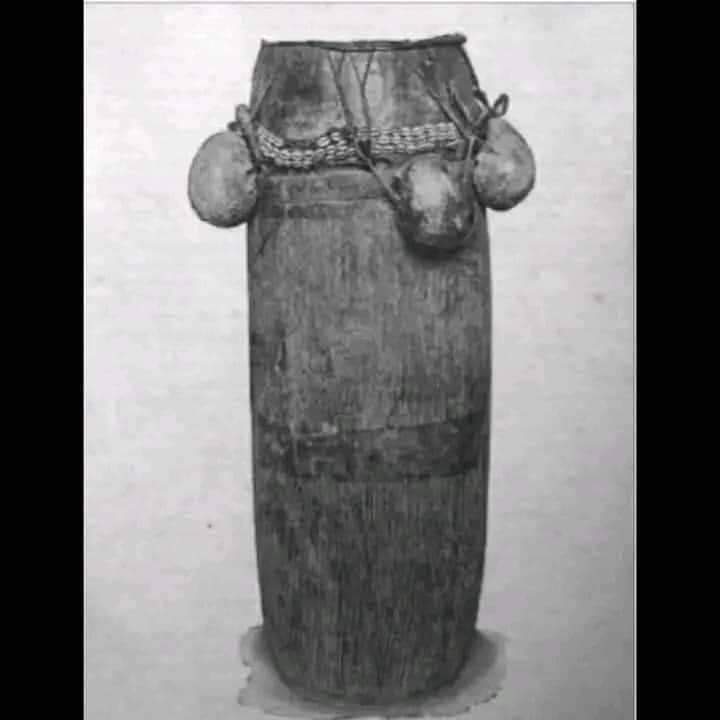Adavatram – The Ewe War Drum with a Macabre Past
In the heart of Ewe culture lies an artifact as powerful as it is mysterious—the Adavatram. More than just a musical instrument, this war drum is steeped in history, ritual, and spiritual power. With a name that translates to “madness has overtaken me”, the Adavatram is not for the faint-hearted. It embodies the intensity of ancestral connection, the gravity of warfare, and the reverence for tradition that defines Ewe society.
A Drum Like No Other
Adorned with seven human skulls and played using human elbow bones, the Adavatram is a striking symbol of both reverence and fear. Once used to rally warriors and invoke ancestral strength in battle, the drum is now played only during sacred ceremonies—most notably the funerals of chiefs and warlords. Its music is reserved for the spiritually powerful: chiefs, elders, great warriors, or those possessed by ancestral spirits.
It is only played seven times, always at midnight, and strangers are warned to keep away when its haunting rhythm begins.
Symbolism in Bone and Spirit
The macabre elements of the Adavatram are not meant to shock, but to symbolize profound spiritual truths:
-
Connection to Ancestral Spirits
In Ewe cosmology, human remains—especially skulls—are believed to house or connect to the spirits of the dead. The adornment of the Adavatram with skulls allows the living to invoke and commune with ancestral warriors and leaders. -
Tribute to the Fallen
The skulls and bones are also a tribute, commemorating fallen warriors whose strength and bravery continue to guide the living. Their spirits live on through the drum, immortalized in its presence and sound. -
A Tool of Intimidation and Power
In wartime, the drum’s appearance alone was enough to strike fear. The visual of a skull-laden drum told enemies that the Ewe were not only fierce in battle but spiritually fortified. -
Spiritual Sanctity and Hierarchical Use
This is not an instrument for entertainment. Its use is strictly controlled, limited to those with ritual authority or spiritual possession, reinforcing its sanctity and exclusivity.
From War to Ceremony
While its days on the battlefield are long past, the Adavatram continues to play a crucial role in ceremonial life. At funerals of great leaders, it calls forth the spirits of the ancestors to welcome the deceased. The ritual is both sacred and somber, marking the transition of a soul into the spiritual world, and reminding the community of its ties to those who came before.
Cultural Identity and Legacy
The Adavatram is a living emblem of Ewe heritage. In an age where cultural practices are rapidly disappearing, its preservation is an act of resistance and pride. It serves as a cultural anchor, connecting the youth to their history and grounding the community in its ancestral truths.
Its music may be rarely heard, but its presence looms large—a reminder of war, wisdom, and the spiritual world that surrounds us.
Conclusion
The Adavatram is not merely a drum; it is a sacred vessel of memory and spirit, echoing the past with every beat. It represents the resilience, spirituality, and complexity of Ewe culture, standing tall as a reminder that even in peace, the voices of the ancestors still speak.
Discover more about Ewe traditions at letsdicover.com
Would you like a featured image suggestion or social media caption to go with this post?





